MAE 3303 Aerodynamics of Compressible Flow
Homework 11 Solution
Answers to Study Questions
- Why is it not possible to use a simple transformation to connect
linearized supersonic flow to incompressible flow?
ans: The potential equation for supersonic flow has a negative sign
on the fxx term. This makes it a wave equation which can not
be mapped to Laplace's equation using a real-valued transformation.
- According to linearized supersonic flow theory, both oblique
shock and expansion waves are treated as what kind of wave?
ans: Mach wave.
- why are the linearized results for the oblique shock wave and
expansion fan the same?
ans: Because weak shocks are nearly isentropic.
- How is it possible to determine what region of the flow is
disturbed by a body in a linearized supersonic flow?
ans: Everything behind the Mach line is disturbed.
- What peculiar property holds along a Mach line within the
linearized supersonic potential flow framework?
ans: The velocity potential is constant along a Mach line.
- The pressure coefficient in linearized supersonic flow is
proportional to what geometrical feature?
ans: The flow angle (measured relative to the free-stream).
- Does linearized theory predict wave drag?
ans: Yes. Even though the shock waves are not computed explicitly, the
pressure distribution yields a non-zero drag.
- Does Cp increase or decrease with Mach number in supersonic
flow? What does this tell you about the efficiency of airfoils at
high Mach number?
ans: Decreases. It is therefore harder to generate pressure forces
as the Mach number increases and the ability to produce lift diminishes.
- According to supersonic linearized theory, the lift is related
to what geometrical features of the airfoil?
ans: The angle of attack only.
- According to supersonic linearized theory, the drag is related
to what geometrical features of the airfoil?
ans: Angle of attack, thickness, and camber.
- According to supersonic linearized theory, the pitching moment
is related to what geometrical features of the airfoil?
ans: Angle of attack and camber.
- According to supersonic linearized theory, what airfoil shape
has maximum lift to drag ratio for a fixed amount of lift?
ans: Flat plate
- Does the Kutta condition apply in a supersonic flow?
ans: Not in the conventional sense. The supersonic airfoil carries load
all the way up to the trailing edge. The tail shock and expansion fans
allow the pressure from the upper and lower surfaces to agree, but only
downstream of the trailing edge.
- How does the loading for a flat plate at angle of attack compare
between subsonic and supersonic flow?
ans: Load is concentrated near the leading edge in subsonic flow, it
is evenly distributed over the chord in supersonic flow.
- How will the pitching moment change as a 2-D airfoil transitions
between subsonic and supersonic flight?
ans: The magnitude of the pitching moment will increase. Large control
inputs may be required and the airplane may even become unstable.
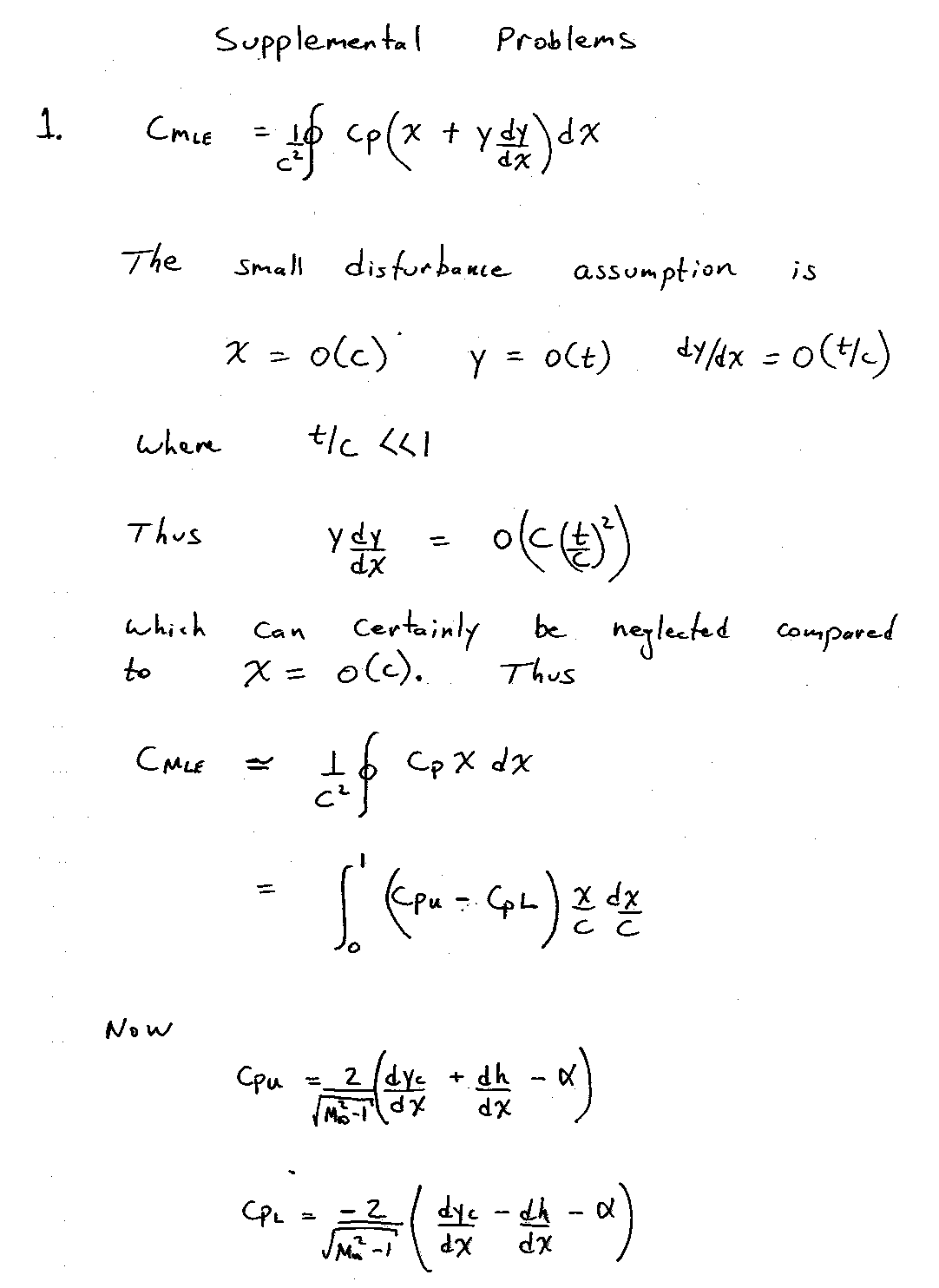
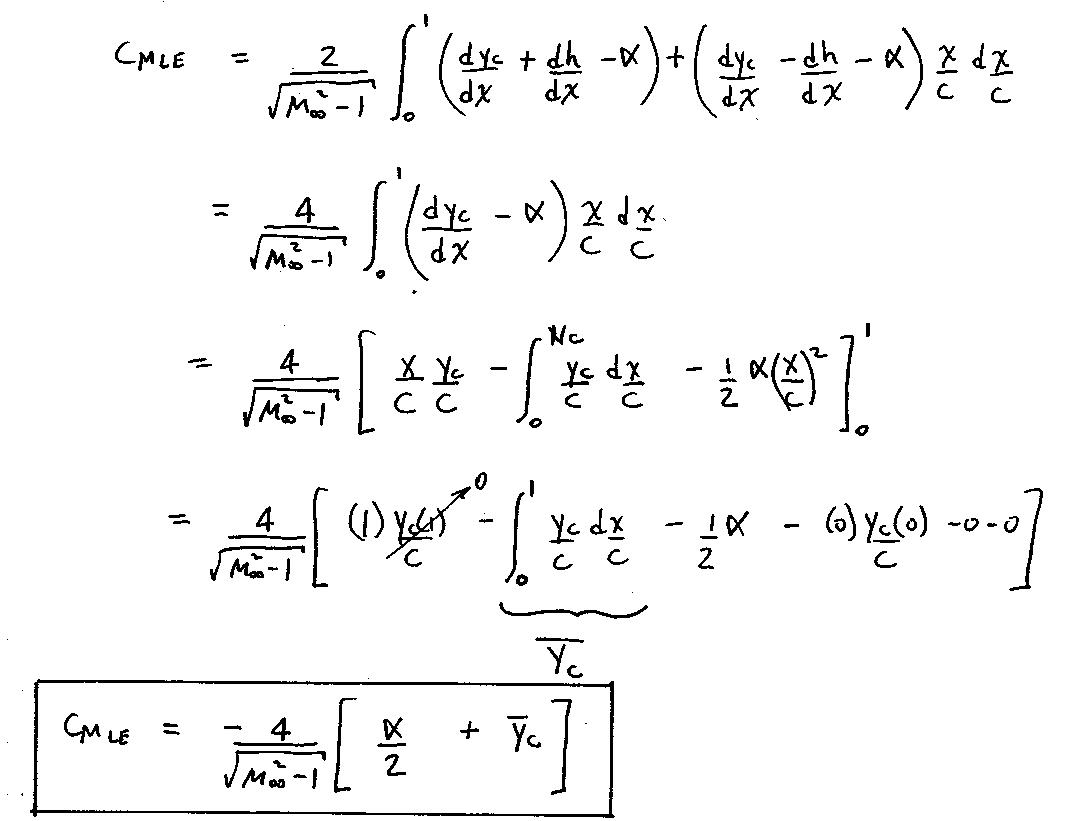
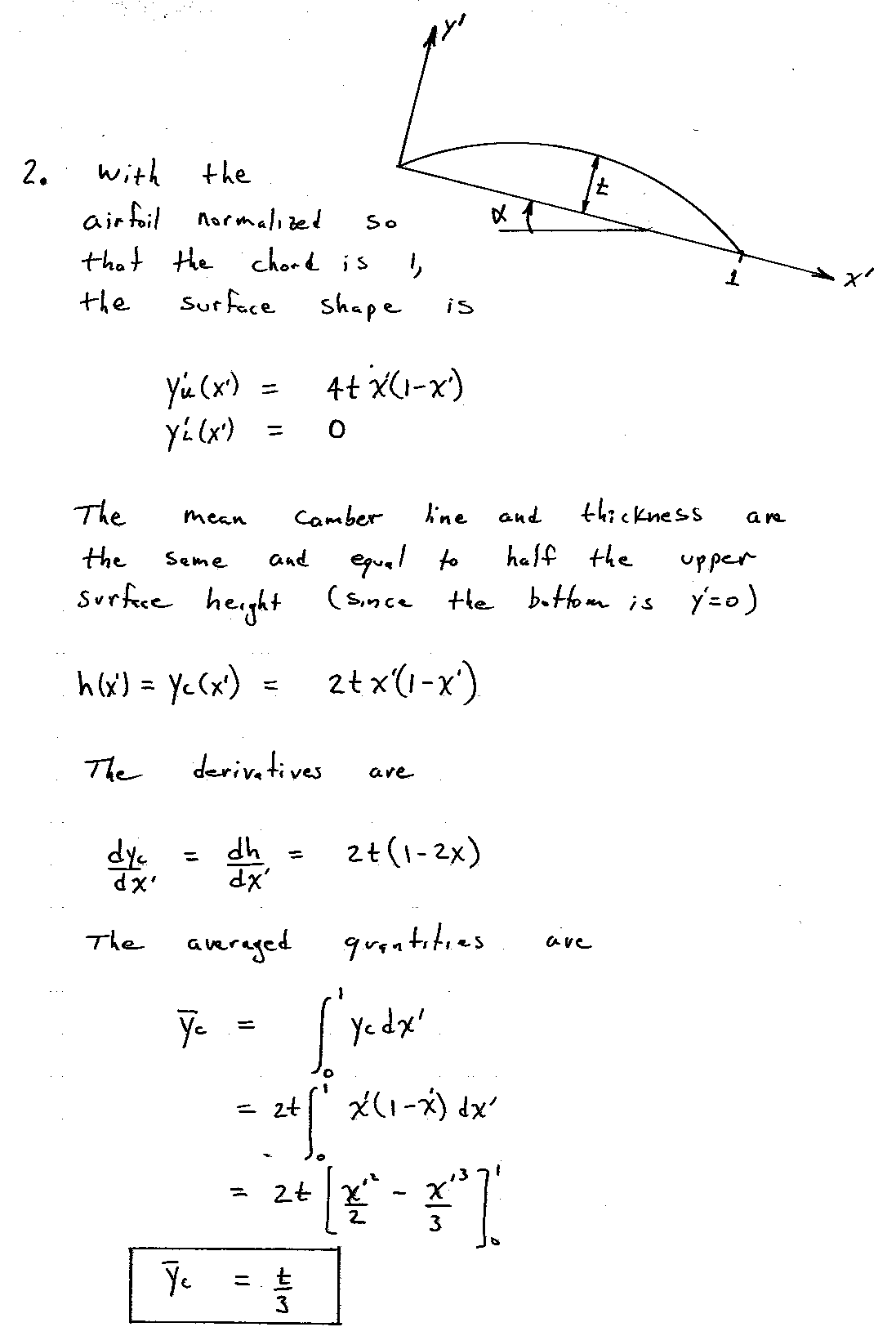
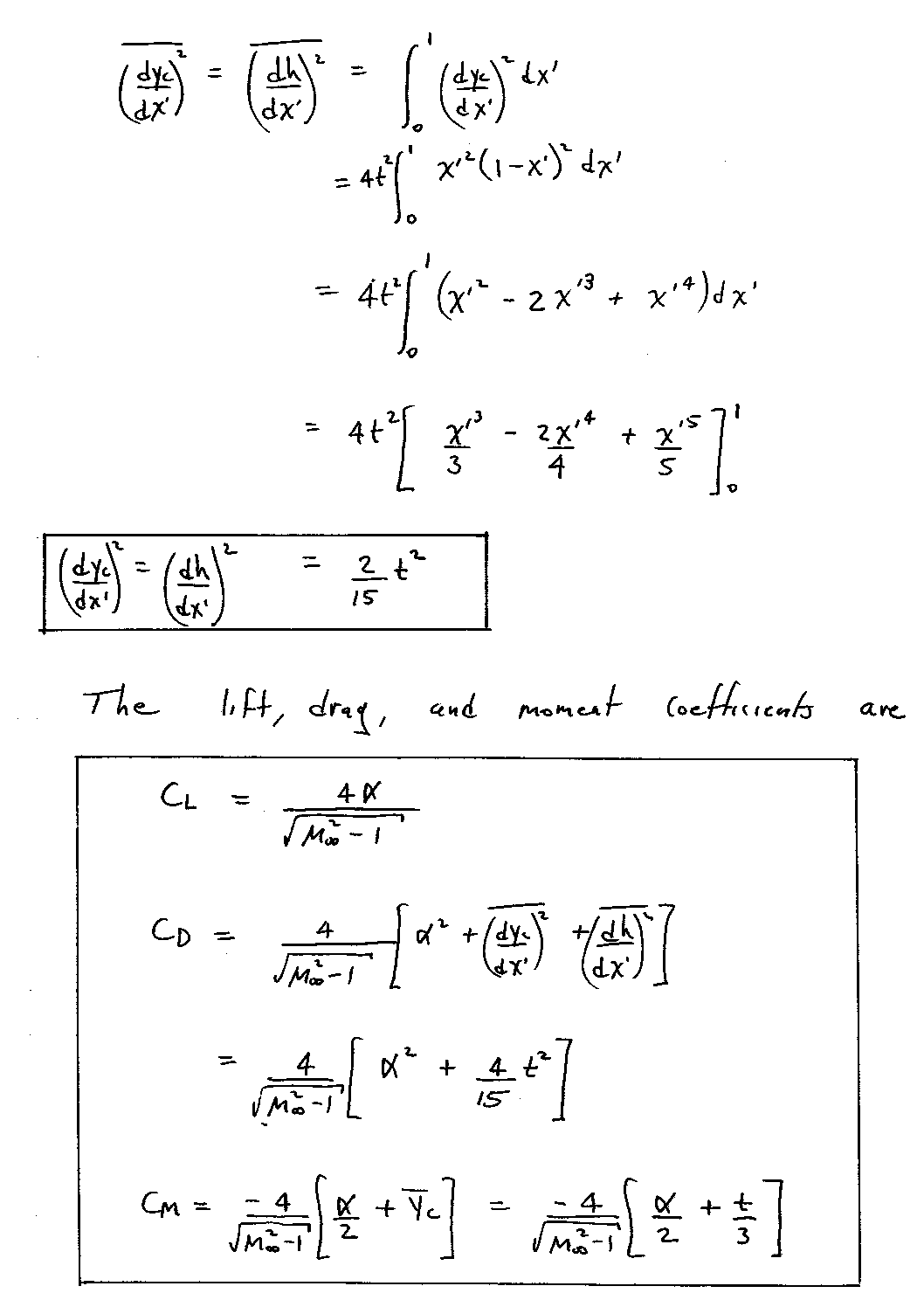
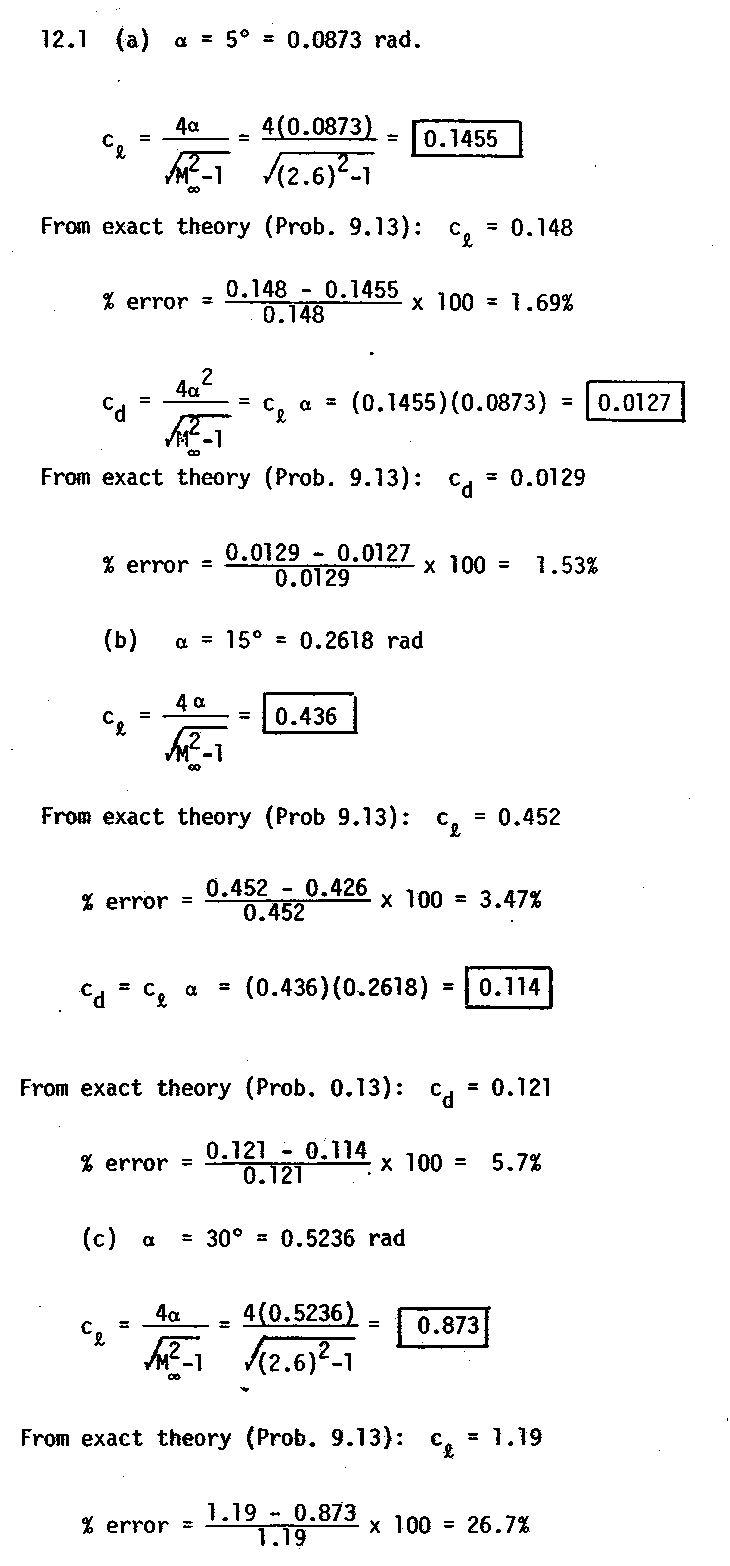
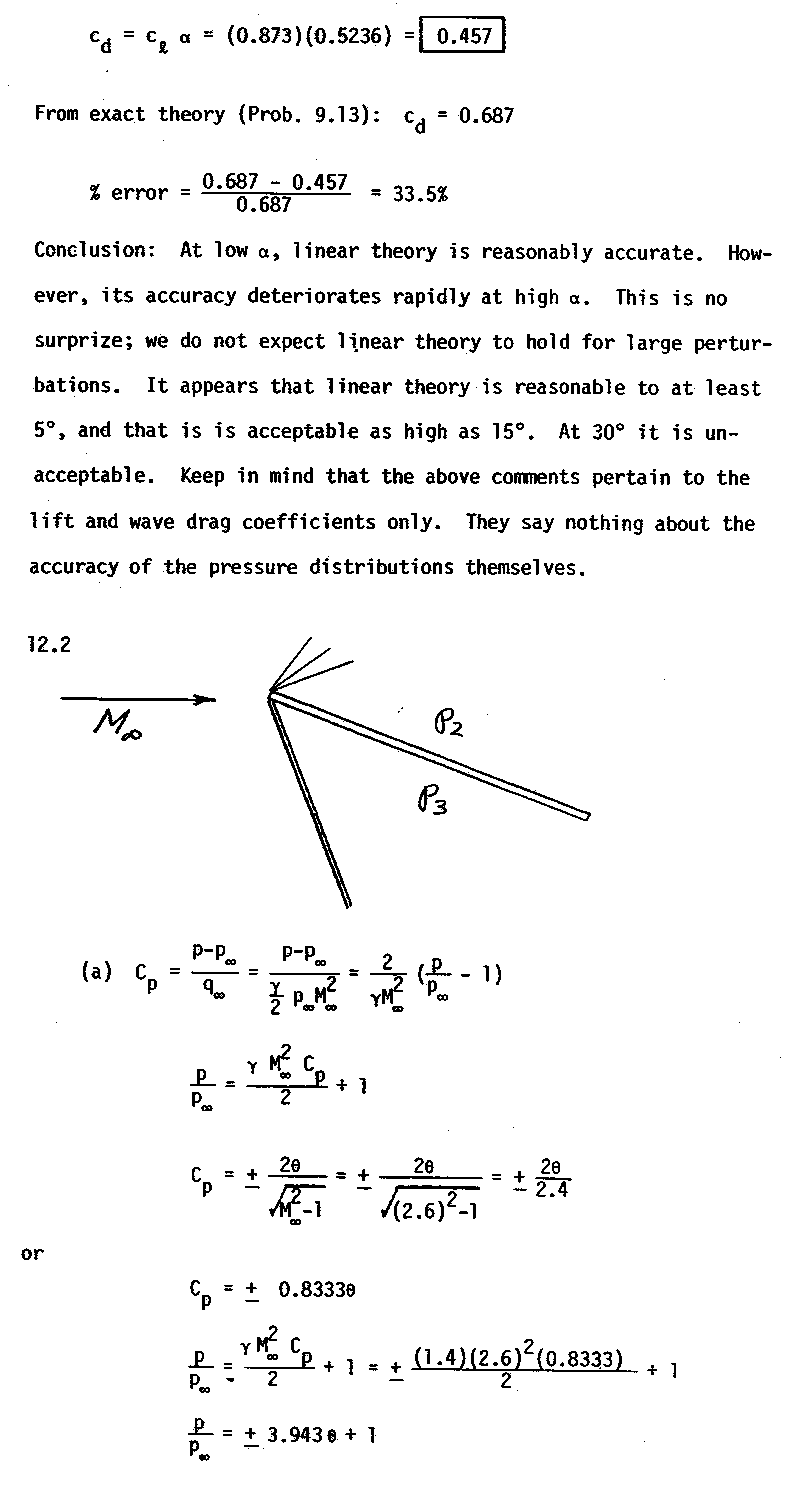
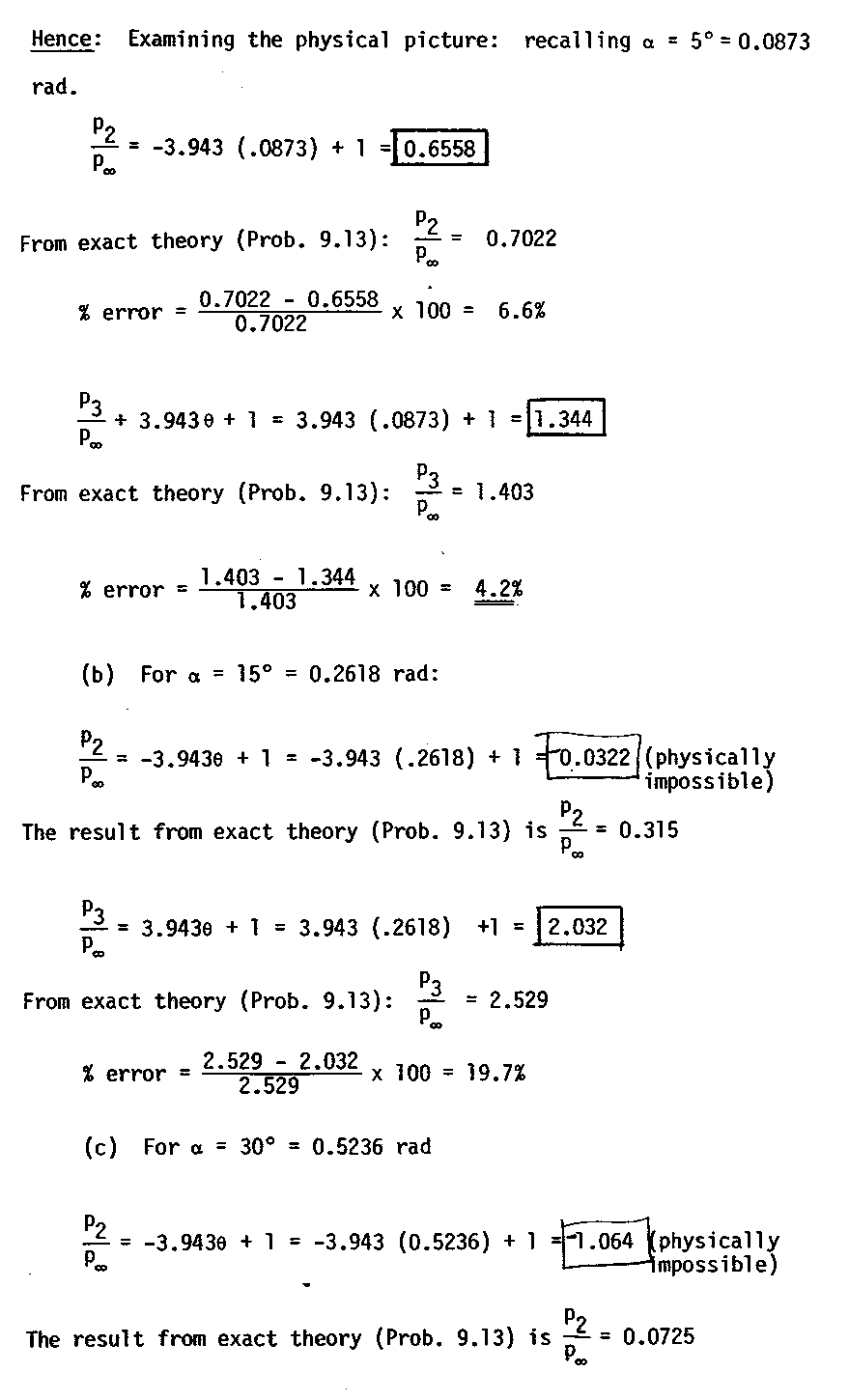
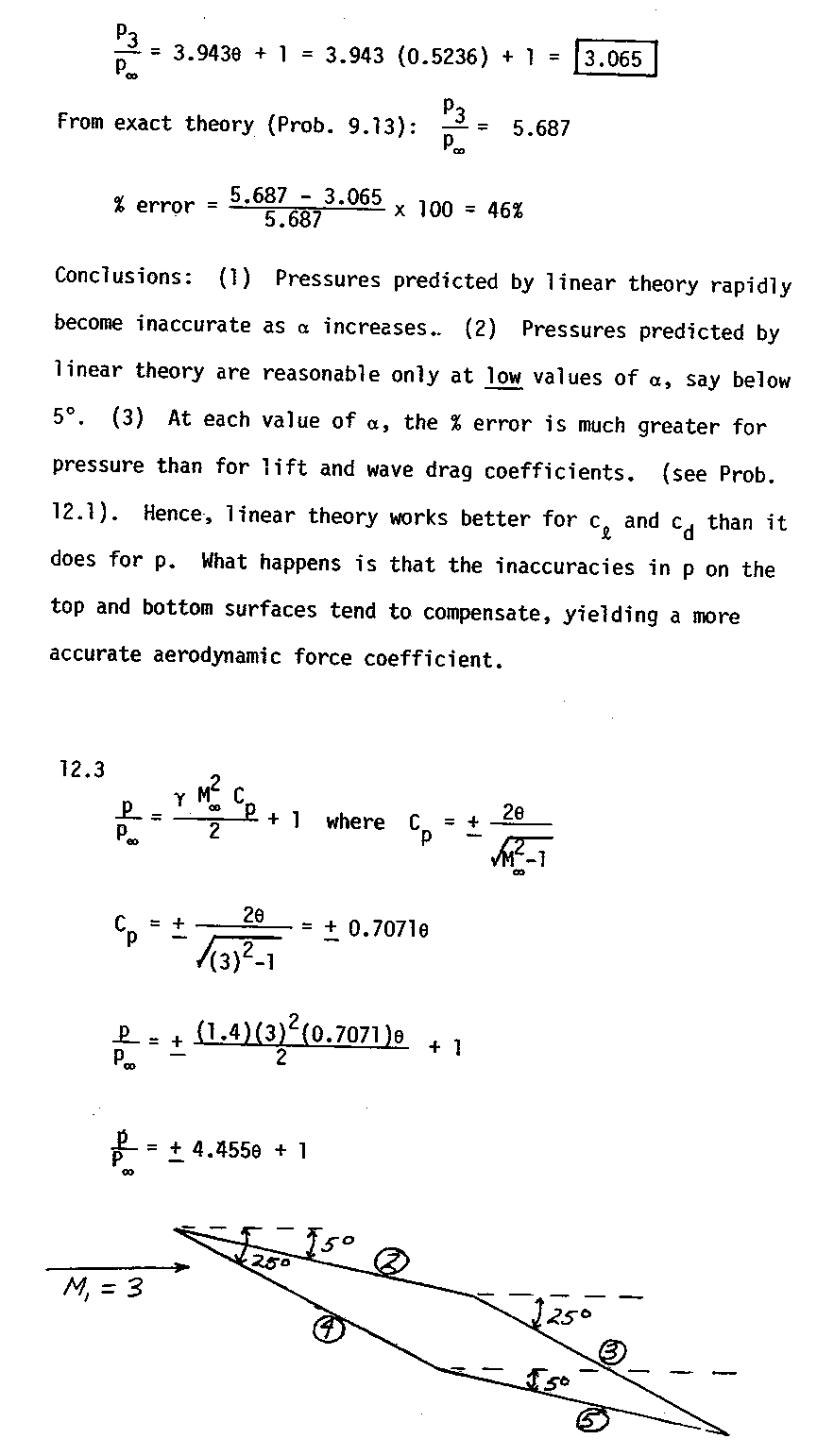
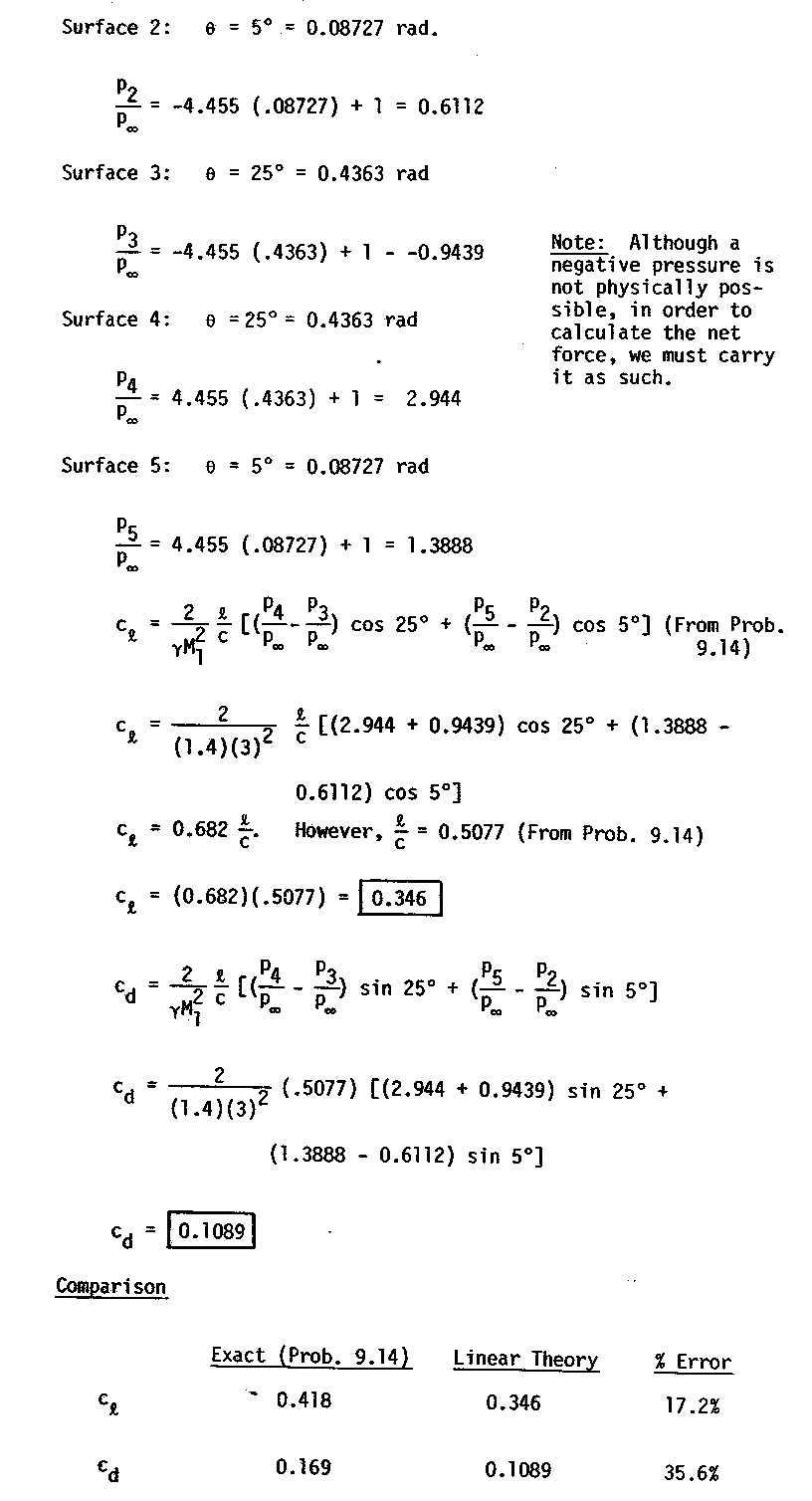
File translated from TEX by TTH, version 2.00.
On 8 May 2000, 16:22.









